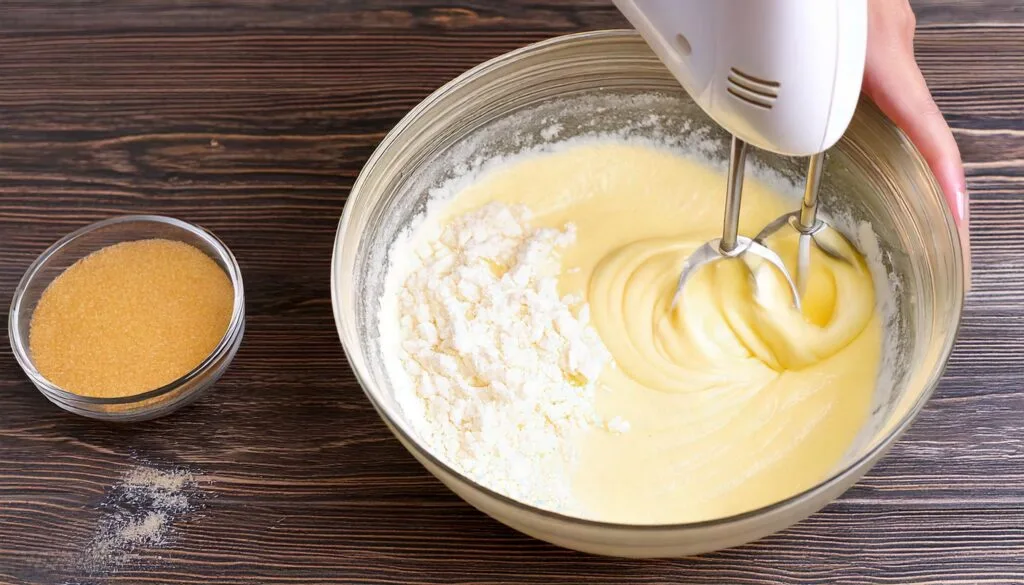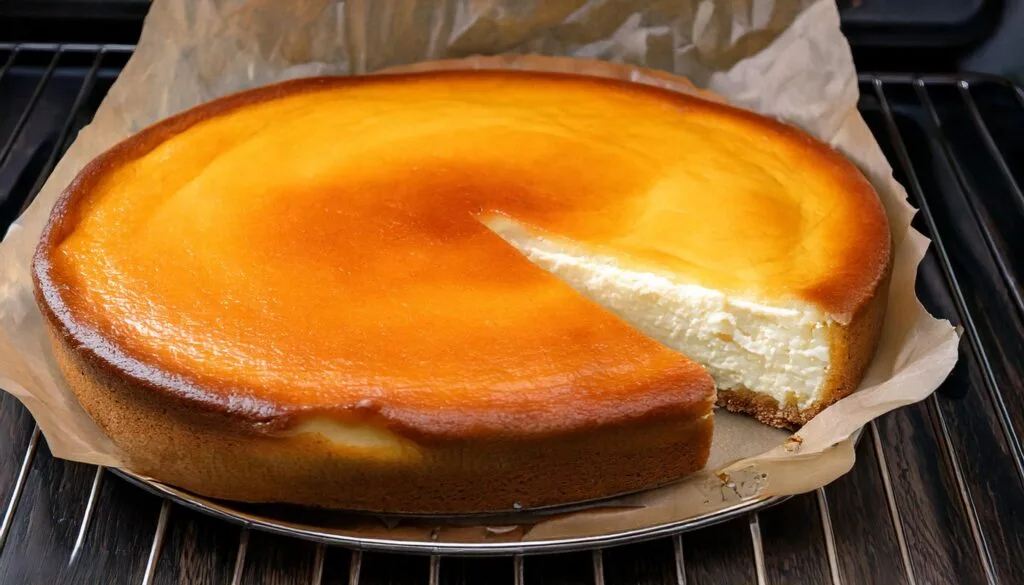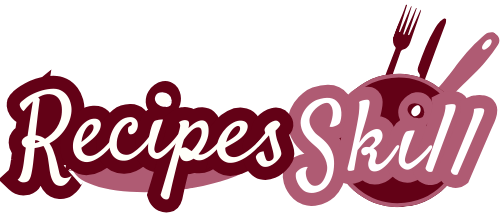When it comes to cheesecake, the filling is what makes this dessert irresistibly creamy and luxurious. But have you ever wondered what cheesecake filling is made from? Whether you’re a baking enthusiast or just someone curious about the science of desserts, understanding the components of cheesecake filling can help you craft the perfect slice or simply appreciate it more when you indulge. In this article, we’ll break down every ingredient, explore preparation techniques, and answer the most commonly asked questions about this luscious treat. Let’s dive in!
What is Cheesecake Filling Made From?
Cheesecake filling is the star of the show when it comes to creating this silky, indulgent dessert. While variations exist depending on the type of cheesecake you’re making be it baked, no-bake, or even vegan the core ingredients often remain similar. Let’s unravel the essentials.
1.1 Core Ingredients That Define Cheesecake Filling
Cheesecake filling typically consists of a few simple yet crucial components. Each ingredient plays a unique role in achieving the dessert’s signature texture and flavor:
- Cream Cheese: The backbone of any cheesecake filling, cream cheese provides the creamy, rich texture that cheesecake is known for. Full-fat versions work best to ensure stability and flavor.
- Sweeteners: Granulated sugar is the go-to choice for sweetening cheesecake filling. Some recipes may also use powdered sugar for smoother consistency in no-bake options.
- Eggs: For baked cheesecakes, eggs act as a binding agent, giving the filling its structure and a custard-like finish.
- Heavy Cream or Sour Cream: These ingredients lend moisture and additional creaminess, balancing the texture and preventing the filling from being overly dense.
- Flavoring Agents: Vanilla extract, lemon zest, or even a hint of citrus juice can elevate the flavor profile, adding depth to your cheesecake.
1.2 Types of Cheesecake Fillings
Cheesecake isn’t a one-size-fits-all dessert. Depending on the method and type of cheesecake, fillings can vary:
- Baked Cheesecake Filling: This classic option uses cream cheese, eggs, and often sour cream for a rich, firm filling that sets in the oven.
- No-Bake Cheesecake Filling: Ideal for warmer months, no-bake cheesecake fillings omit eggs and instead use gelatin, whipped cream, or cream cheese to achieve a soft, mousse-like consistency.
- Vegan and Dairy-Free Variations: For plant-based options, ingredients like cashew cream, coconut milk, or tofu replace traditional dairy components, creating an equally creamy result.
These variations not only cater to different dietary needs but also provide unique textures and flavors.
Ingredients of the Recipe
Cheesecake filling is surprisingly simple, yet each ingredient serves an essential purpose. Whether you’re whipping up a traditional New York cheesecake or experimenting with no-bake options, the right ingredients make all the difference.
2.1 Core Ingredients That Make the Magic
The best cheesecake fillings rely on a harmonious balance of a few key elements:
- Cream Cheese: The foundation of cheesecake filling, this is where the signature creaminess comes from. Make sure the cream cheese is at room temperature to avoid lumps when blending. Full-fat cream cheese delivers the best results, as reduced-fat varieties can lead to a watery or unstable filling.
- Sweeteners: Sugar isn’t just for sweetness it helps create a smooth texture by blending seamlessly with cream cheese. Granulated sugar is standard, but powdered sugar may work better for no-bake recipes.
- Eggs: When baking a cheesecake, eggs act as the binder, giving the filling its velvety custard texture. For the best consistency, add one egg at a time, ensuring each is fully incorporated before adding the next.
- Heavy Cream or Sour Cream: These provide richness and moisture. Heavy cream adds fluffiness, while sour cream lends a slightly tangy flavor that complements the sweetness beautifully.
- Vanilla Extract and Other Flavorings: Pure vanilla extract enhances the overall taste, but you can get creative with lemon juice, orange zest, or even almond extract for unique flavor profiles.
2.2 Variations for Every Preference
The beauty of cheesecake lies in its versatility. From classic baked recipes to diet-friendly twists, there’s a filling for everyone:
- Traditional Baked Cheesecake: This uses cream cheese, eggs, sugar, and sometimes sour cream for a firm yet creamy filling that holds its shape when sliced.
- No-Bake Cheesecake: Perfect for beginners, this option skips eggs and instead relies on cream cheese, whipped cream, and sometimes gelatin for structure. The result? A light, mousse-like filling.
- Gluten-Free and Vegan Options: Gluten-free recipes swap thickeners like all-purpose flour with almond flour or cornstarch. For vegan options, dairy replacements like cashew cream or silken tofu combined with plant-based sweeteners work wonders.
Tips for Perfect Ingredient Substitutions
If you’re out of an ingredient or catering to specific dietary needs, here’s how to make smart swaps:
- Use mascarpone instead of cream cheese for a milder flavor and ultra-smooth consistency.
- Replace heavy cream with Greek yogurt to cut calories while maintaining creaminess.
- For sugar-free cheesecake, opt for natural sweeteners like stevia or erythritol.
The possibilities are endless, and with the right combination of ingredients, you’ll achieve a cheesecake filling that’s not just delicious but tailored to your preferences.
Techniques for Preparing

Now that we’ve covered the core ingredients, it’s time to focus on preparation. Crafting the perfect cheesecake filling is as much about technique as it is about ingredients. From avoiding lumps to achieving the right consistency, a few simple tricks can transform your cheesecake into a masterpiece.
3.1 Mixing Techniques for a Smooth Cheesecake Filling
Getting the texture right is essential for a cheesecake filling that’s both creamy and lump-free. Here’s how:
- Use Room-Temperature Ingredients: Always let cream cheese, eggs, and other cold ingredients come to room temperature before mixing. This ensures smoother blending and prevents clumps.
- Start Slow: Begin mixing cream cheese and sugar on low speed. Gradually increase the speed to avoid air bubbles, which can create cracks in baked cheesecakes.
- Add Eggs One at a Time: For baked cheesecakes, incorporating eggs individually allows them to mix thoroughly without overbeating. Overmixing can introduce too much air, leading to a dense, uneven texture.
3.2 Avoiding Common Cheesecake Filling Mistakes
Even seasoned bakers run into issues with cheesecake filling. Here’s how to troubleshoot:
- Problem: Lumpy Filling
- Solution: Use a stand mixer or handheld mixer and scrape down the sides of the bowl frequently to ensure everything blends evenly.
- Problem: Watery Texture
- Solution: Ensure you’re using full-fat cream cheese and follow the recipe proportions closely. Substituting too many low-fat ingredients can lead to a runny filling.
- Problem: Cracks in Baked Cheesecake
- Solution: Don’t overmix the batter, and bake the cheesecake in a water bath to maintain consistent moisture levels in the oven.
3.3 Prepping No-Bake Cheesecake Filling
No-bake cheesecake filling is easier to prepare but requires some care to achieve the right consistency:
- Whip the Cream: For no-bake recipes, folding whipped cream into the filling creates an airy, mousse-like texture.
- Use Stabilizers if Needed: Gelatin is often added to help the filling set properly. Dissolve it thoroughly in warm water before mixing it into the batter.
- Chill Thoroughly: No-bake cheesecake requires at least 4–6 hours in the fridge (or overnight) to firm up. Don’t rush this step!
Pro Tips
- Don’t Overmix: Whether baked or no-bake, overmixing can lead to a dense filling. Mix just until the ingredients are combined.
- Strain for Silky Smoothness: If you’re a perfectionist, pass the mixture through a fine-mesh sieve to eliminate any last bits of lumpiness.
- Taste Test: Always taste the filling before adding it to the crust. Adjust sweetness or flavoring as needed.
Variations of Cheesecake Filling
Cheesecake filling isn’t one-size-fits-all there’s a variation for every occasion and dietary preference. Whether you’re aiming for a rich, decadent treat or a light, fruity option, there’s plenty of room to experiment.
4.1 Classic Variations
These timeless options are loved by cheesecake enthusiasts everywhere:
- New York-Style Cheesecake Filling: The gold standard, this filling is made with cream cheese, eggs, sugar, and heavy cream. Its dense, velvety texture is achieved by baking at a low temperature.
- Japanese Cheesecake: Known for its airy, soufflé-like texture, this version incorporates whipped egg whites to create a lighter bite. It’s a delightful twist on the traditional cheesecake.
- Philadelphia-Style Cheesecake: A no-bake classic that highlights cream cheese’s tangy flavor without the addition of eggs. Perfect for quick and easy desserts.
4.2 Creative Cheesecake Filling Flavors
Adding unique ingredients or toppings can elevate your cheesecake game:
- Chocolate Cheesecake: Blend melted dark or milk chocolate into the filling for a luscious, indulgent dessert.
- Berry-Infused Cheesecake: Swirl in pureed strawberries, blueberries, or raspberries for a fruity burst of flavor.
- Caramel and Nut Cheesecake: Add caramel sauce and chopped pecans for a rich, nutty twist.
- Coffee Cheesecake: A shot of espresso or coffee powder in the filling brings a bold, aromatic flavor that pairs perfectly with a chocolate crust.
4.3 Cheesecake Fillings for Special Diets
Meeting dietary needs doesn’t mean sacrificing taste:
- Vegan Cheesecake: Cashews blended with coconut cream and maple syrup make a silky, dairy-free filling.
- Gluten-Free Cheesecake: Use gluten-free thickeners like cornstarch or almond flour in place of wheat flour.
- Low-Sugar Cheesecake: Swap granulated sugar for stevia or monk fruit sweeteners for a reduced-sugar option.
- Keto Cheesecake: Almond flour crust and a cream cheese filling sweetened with erythritol are keto-friendly and delicious.
4.4 Regional Cheesecake Filling Favorites
Different cultures bring their unique spin to cheesecake fillings:
- Italian Ricotta Cheesecake: Made with ricotta cheese instead of cream cheese, it has a slightly grainy texture and a lighter taste.
- German Käsekuchen: Uses quark (a type of fresh cheese) to create a tangy and fluffy filling.
- Greek Cheesecake: Incorporates Greek yogurt for a creamy texture and distinct tang.
Pro Tips for Experimenting with Cheesecake Fillings
- Blend Flavors: Combine two fillings, like chocolate and vanilla, for a marbled effect.
- Add Toppings: Fresh fruits, whipped cream, or chocolate shavings can complement the flavor of your filling.
- Try a Savory Cheesecake: Yes, savory! Use cream cheese, herbs, and garlic for an appetizer-style cheesecake.
The Science Behind Cheesecake Filling

Understanding the science of cheesecake filling helps you achieve the perfect texture, flavor, and consistency. Each ingredient plays a crucial role, and knowing how they interact with each other can elevate your cheesecake skills to the next level. Let’s dive into the science of cheesecake filling and explore the key factors that contribute to its structure.
5.1 The Role of Cream Cheese in Cheesecake Filling
Cream cheese is the foundation of most cheesecake fillings, providing the rich, tangy flavor and smooth texture that makes cheesecake so indulgent. But how exactly does it work?
- Fat Content: The fat in cream cheese contributes to the filling’s creamy and smooth texture. The higher the fat content, the richer and denser the filling.
- Emulsification: Cream cheese helps emulsify the mixture, binding the fats and water together. This creates the desired creamy, silky consistency without separation.
- Tanginess: The mild tang of cream cheese balances the sweetness of the sugar, contributing to the distinct flavor profile of cheesecake.
5.2 The Importance of Eggs in Cheesecake Filling
Eggs play an essential role in both the texture and structure of baked cheesecakes. They provide structure, act as a binder, and help the filling set during baking. Let’s break it down:
- Binding Agent: Eggs help hold the cheesecake together, ensuring it doesn’t fall apart when sliced.
- Texture: The proteins in eggs coagulate as the cheesecake bakes, giving it structure and stability. This is especially important for traditional baked cheesecakes.
- Moisture: While eggs provide structure, they also contribute moisture, preventing the cheesecake from becoming too dry.
5.3 The Role of Sugar in Cheesecake Filling
Sugar is the sweetener that brings balance to the rich and tangy flavors in the filling. It also affects the texture in several ways:
- Sweetness: Of course, sugar sweetens the filling to the right level. Depending on the type of cheesecake, you may use white, brown, or powdered sugar.
- Crystallization: When sugar dissolves in the cream cheese mixture, it ensures the cheesecake filling’s smoothness and uniform sweetness.
- Moisture Retention: Sugar helps retain moisture in the filling, contributing to a creamy consistency.
5.4 The Impact of Heavy Cream in Cheesecake Filling
Heavy cream is another key ingredient in many cheesecake recipes, especially for those aiming for a smooth and creamy filling. Here’s why it matters:
- Richness: The high-fat content of heavy cream adds richness and smoothness to the filling, helping create that melt-in-your-mouth texture.
- Stability: When whipped, heavy cream can contribute to a stable, aerated texture in no-bake cheesecakes.
- Consistency: Heavy cream contributes to the overall consistency of the filling, providing a silky smooth finish.
5.5 The Role of Other Ingredients in Cheesecake Filling
Other ingredients, like vanilla extract, sour cream, or gelatin, can also enhance the flavor and texture of your cheesecake filling:
- Vanilla Extract: A small amount adds a fragrant, sweet flavor that complements the tangy cream cheese.
- Sour Cream: Often used in New York-style cheesecakes, sour cream adds a creamy texture and additional tanginess.
- Gelatin: In no-bake cheesecakes, gelatin acts as a stabilizer, helping the filling set properly and ensuring a smooth texture without clumps.
5.6 The Baking Process and Its Effect on Cheesecake Filling
When it comes to baked cheesecakes, the baking process is just as important as the ingredients. The key factors include:
- Low and Slow: Baking a cheesecake at a low temperature ensures that it sets evenly, without cracks. Rapid temperature changes or high heat can cause the filling to overcook or crack.
- Water Bath: Many cheesecakes are baked in a water bath, which prevents the filling from drying out and ensures a creamy, smooth texture.
- Resting Time: After baking, letting the cheesecake rest in the oven (with the door slightly open) helps it cool gradually, reducing the risk of cracks.
FAQs
1. What are the basic ingredients in cheesecake filling?
The basic ingredients for a traditional cheesecake filling are cream cheese, sugar, eggs, and vanilla extract. Additional ingredients like heavy cream, sour cream, or gelatin may be added depending on the specific recipe and whether the cheesecake is baked or no-bake.
2. Can I use low-fat cream cheese for cheesecake filling?
Yes, you can use low-fat cream cheese, but it may alter the texture and flavor slightly. Low-fat versions can result in a less creamy texture and a more tangy flavor, as the fat content is a key factor in the smoothness and richness of the filling. If you prefer a lighter option, it’s best to balance it with other ingredients like heavy cream or sour cream for consistency.
3. Why does cheesecake filling crack during baking?
Cheesecake filling may crack during baking due to rapid temperature changes or baking at too high of a temperature. To avoid this, it’s recommended to bake at a low temperature, use a water bath to maintain moisture, and allow the cheesecake to cool gradually in the oven to prevent sudden shifts in temperature.
4. Can I make cheesecake filling without eggs?
Yes, you can make a cheesecake filling without eggs, especially for no-bake cheesecakes. To substitute eggs, you can use gelatin or agar-agar to help the filling set. These alternatives will maintain the structure of the cheesecake without using eggs.
5. How do I achieve a smooth cheesecake filling?
To achieve a smooth cheesecake filling, make sure to thoroughly beat the cream cheese until it’s completely smooth before adding other ingredients. Additionally, using room temperature ingredients and gently mixing them can help prevent lumps, ensuring a silky texture.
6. How long should I chill a cheesecake filling before serving?
If you’re making a no-bake cheesecake, it should be chilled for at least 4 hours or overnight to allow the filling to set properly. For baked cheesecakes, the filling will set as it cools, but letting it rest in the fridge for several hours improves both flavor and texture.
Conclusion
When it comes to cheesecake filling, the key to perfection lies in understanding how each ingredient works together to create that rich, creamy texture and satisfying flavor. Whether you’re baking a traditional New York-style cheesecake or preparing a no-bake version, the combination of cream cheese, eggs, and sugar serves as the backbone of the filling. With the right balance of ingredients and an understanding of the baking process, you can craft a cheesecake filling that’s guaranteed to impress.
Remember, the beauty of cheesecake lies in its versatility. From flavored variations to unique fillings, the possibilities are endless. So next time you’re whipping up a cheesecake, embrace your creativity and use this knowledge to make your filling even better!
More useful links:
